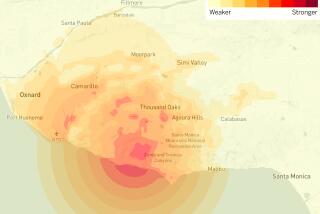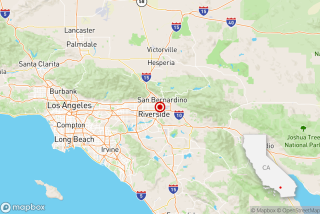‘When you see mountains, think earthquakes in California,’ seismologist says
Earthquake activity in California’s Channel Islands shouldn’t be all that surprising. After all, earthquakes created the Channel Islands.
In fact, mountains throughout California are generally creations of earthquakes, seismologist Lucy Jones said.
Earthquakes pushed up the Santa Ynez Mountains in Santa Barbara and Ventura counties. The Santa Monica and Hollywood faults were responsible for creating the Santa Monica Mountains. The Sierra Madre fault is pushing up the San Gabriels. The Chino Hills were thrust upward by the Chino Hills fault.
“If you see mountains in California, that means something is moving up those mountains faster than erosion is wearing them down,” Jones said in an interview. “Basically, when you see mountains, think earthquakes in California.”
From a big-picture perspective, earthquake activity in Southern California is the result of immense tectonic forces that are moving the Pacific plate northwest, while the North American plate moves to the southeast. In other words, the Los Angeles side of the San Andreas fault is moving closer to where San Francisco is today, while San Francisco is moving south toward Mexico.
“Plate tectonics hasn’t suddenly stopped; it is still pushing Los Angeles toward San Francisco at the same rate your fingers grow — about 1.5 inches each year…. Their motion cannot be stopped any more than we could turn off the sun,” Jones writes in her forthcoming book, “The Big Ones: How Natural Disasters Have Shaped Us (and What We Can Do About Them).”
That motion, on a geologic scale, creates the seismic pressures that move faults like the one involved Thursday to rupture in earthquakes.
There have been a number of earthquakes in the Pacific Ocean off the California coast in the last century. Thursday’s lunchtime earthquake occurred near the East Santa Cruz Basin fault zone in a region seismologists call the Outer Borderland, Caltech seismologist Egill Hauksson said.
Jones said she received a complaint Thursday about her calling earthquake activity like this normal. Some people on Twitter asked her what the larger meaning was behind the earthquake. But there isn’t any larger meaning nor a clue of when the next big earthquake will come or where it will hit, she said.
For scientists, an earthquake like this one is unsurprising.
“There’s a human need for creating patterns,” Jones said. “It doesn’t make us safer or less safe. It’s a reminder of our reality.”
More to Read
Start your day right
Sign up for Essential California for news, features and recommendations from the L.A. Times and beyond in your inbox six days a week.
You may occasionally receive promotional content from the Los Angeles Times.







